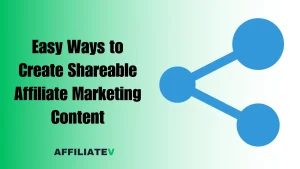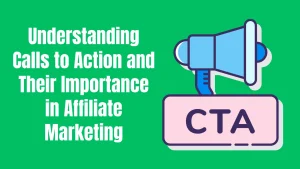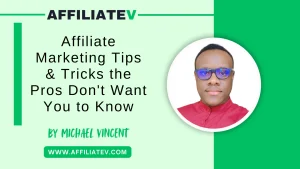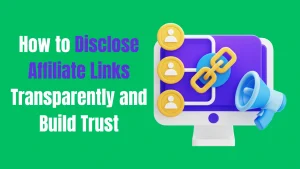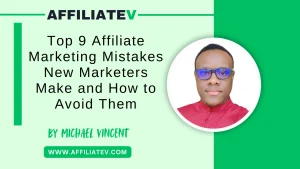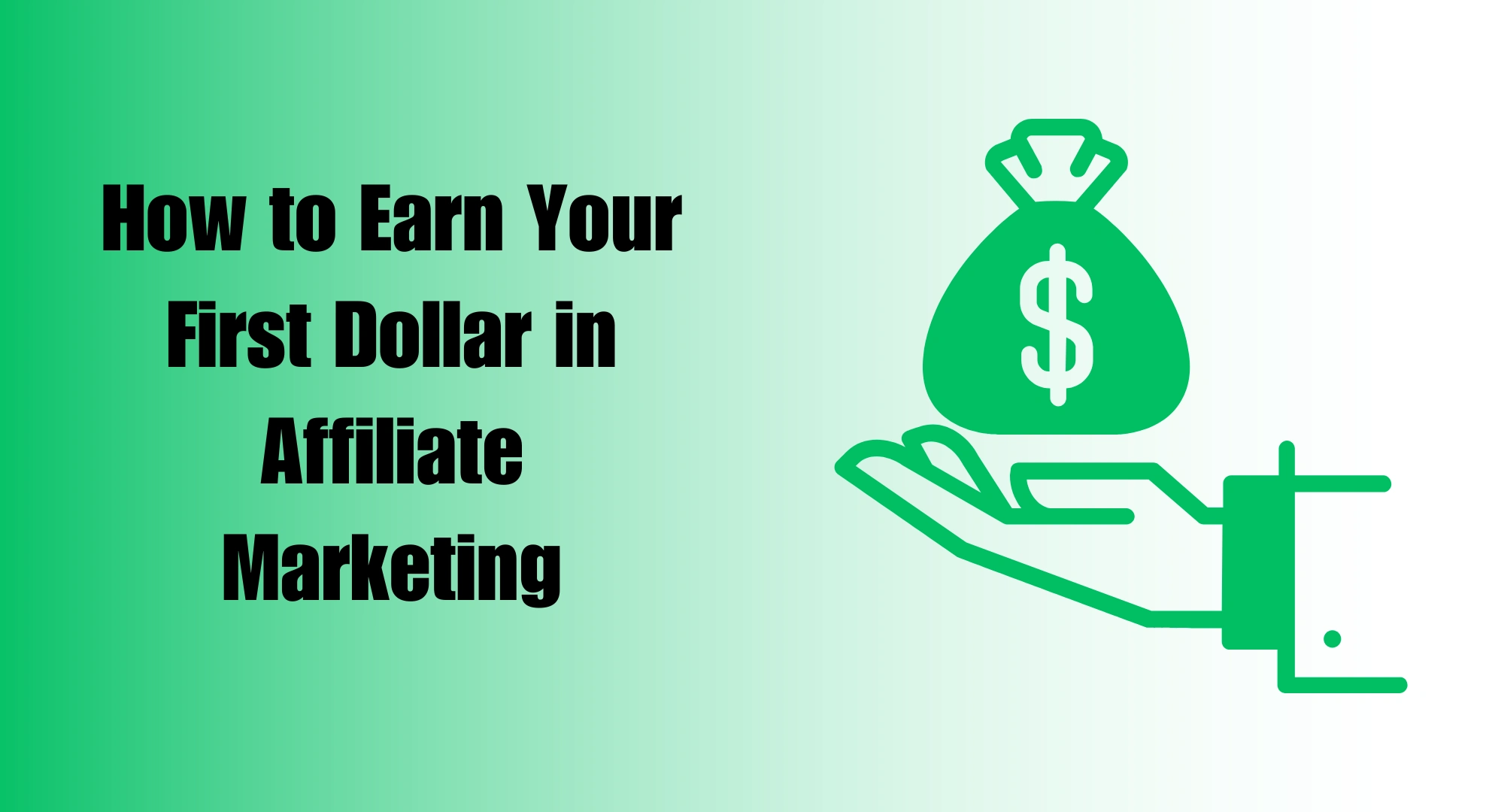
Affiliate marketing is one of the simplest ways to make money online. You promote products, and when someone buys through your link, you earn a commission. There’s no need to create a product, handle customer service, or manage inventory—you just focus on driving traffic and earning commissions.
When I was starting out in affiliate marketing, I had the same questions most beginners have: “Is this too hard?” “How long will it take?” The truth is, earning the first dollar feels impossible—until it happens. It took time, trial and error, and a few mistakes along the way. But once that first commission hit, everything made sense.
The good part is that you don’t need a big budget or advanced skills to get started. Anyone willing to put in the effort and follow a structured approach can earn their first commission. The key is to focus on the right niche, pick the right products, and drive targeted traffic.
Making money with affiliate marketing is real. The hardest part is getting started—but once that first sale happens, it proves that it works. If I could do it, so can you. Let’s break down the steps to make it happen.
So, How Do You Really Earn Your First Dollar in Affiliate Marketing?
Earning your first dollar in affiliate marketing isn’t about luck—it’s about strategy. You need the right approach, the right platform, and a commitment to taking action. Let’s break it down step by step.
Step 1: Understand the Basics of Affiliate Marketing
Affiliate marketing works like a referral system—you promote a product or service, and when someone makes a purchase through your unique link, you earn a commission. Businesses use this model to reach more customers, and affiliates (like you) get paid for driving sales.
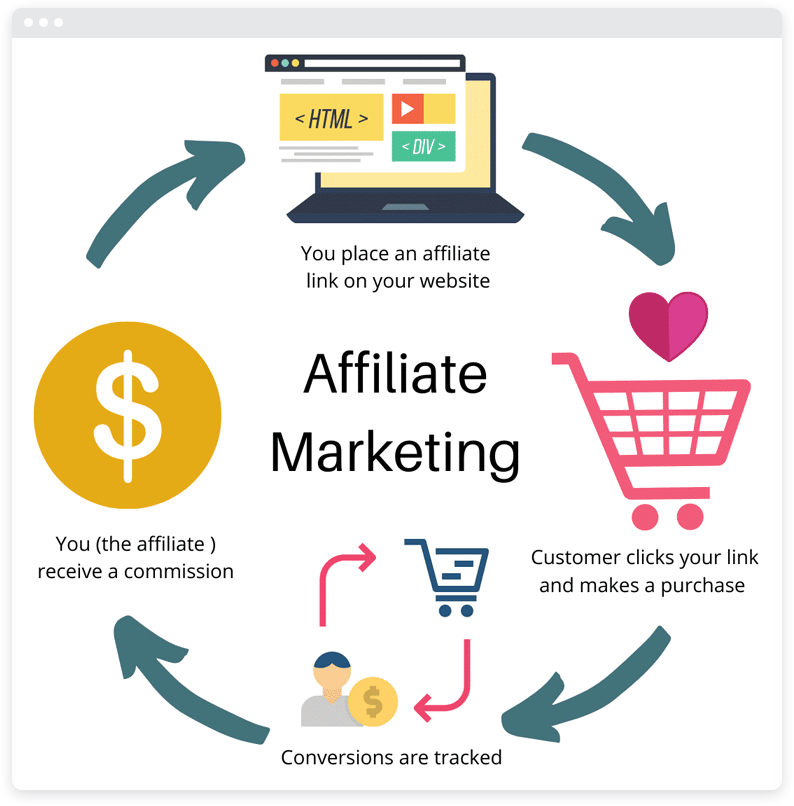
This setup benefits both sides: companies get more customers without upfront marketing costs, and you earn without creating your own product. Your job is to find the right audience, recommend valuable products, and drive traffic to your affiliate links. With the right approach, even a small audience can generate income.
How Affiliate Links Track Commissions
Every time you sign up for an affiliate program, you get a unique tracking link. This link tells the company that the sale came from you. When someone clicks your link and makes a purchase, the system automatically tracks it and credits you with the commission. Some programs even use cookies to track sales for days or weeks after a visitor clicks your link, increasing your chances of earning commissions.
Types of Affiliate Programs
Not all affiliate programs work the same way. Here are the main types:
- CPS (Cost Per Sale): You earn a commission when someone buys a product through your link. This is the most common type. Examples: Amazon Associates, Shopify, and web hosting programs.
- CPA (Cost Per Action): You get paid when someone takes an action (like signing up for a free trial or filling out a form). These often pay higher but require more effort.
- CPL (Cost Per Lead): You earn money when someone becomes a lead by signing up for a newsletter, downloading an app, or registering for a free offer. These are great for beginners since people don’t have to buy anything.
When I started the affiliate marketing business, I focused on CPS programs because they felt straightforward—someone buys, and I earn. But as I learned more, I realized CPL programs can be a great way to earn commissions faster since people only need to sign up. Understanding these models helps you pick the right program for your goals.
Launch Your Affiliate Business with My Free Email Course!
Want to make money with affiliate marketing but don’t know where to start? Our free email course walks you through the exact steps to build a profitable affiliate business—no experience needed. Learn how to pick the right niche, find top-paying programs, and start earning commissions fast. Sign up now and get your first lesson today!
Step 2: Choose a Profitable Niche
Picking the right niche is key to making money in affiliate marketing. A good niche has demand, buyers, and solid affiliate programs. Many beginners fail because they pick something too broad or too competitive. The right niche makes earning commissions much easier.
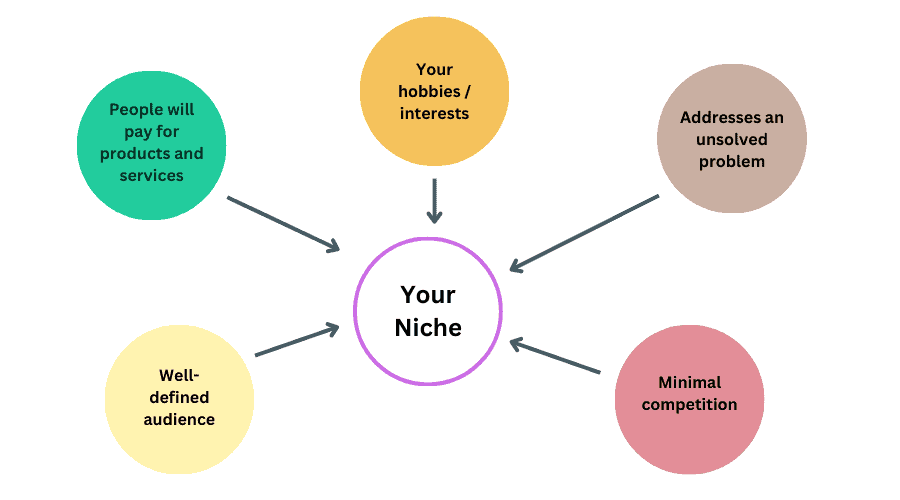
How to Find a Niche That Works
Start with what interests you and what you are passionate about. Promoting products is easier when you enjoy the topic. But passion alone isn’t enough—it also needs profit potential. Here’s how to check:
- Are people searching for it? Use Google Trends, forums, and keyword tools like KWFinder to find low-competitive keywords and see if there’s demand.
- Do companies offer affiliate programs? Check networks like Amazon Associates, ClickBank, and CJ Affiliate.
- Are people already making money in this niche? Look at successful affiliate sites and influencers promoting related products.
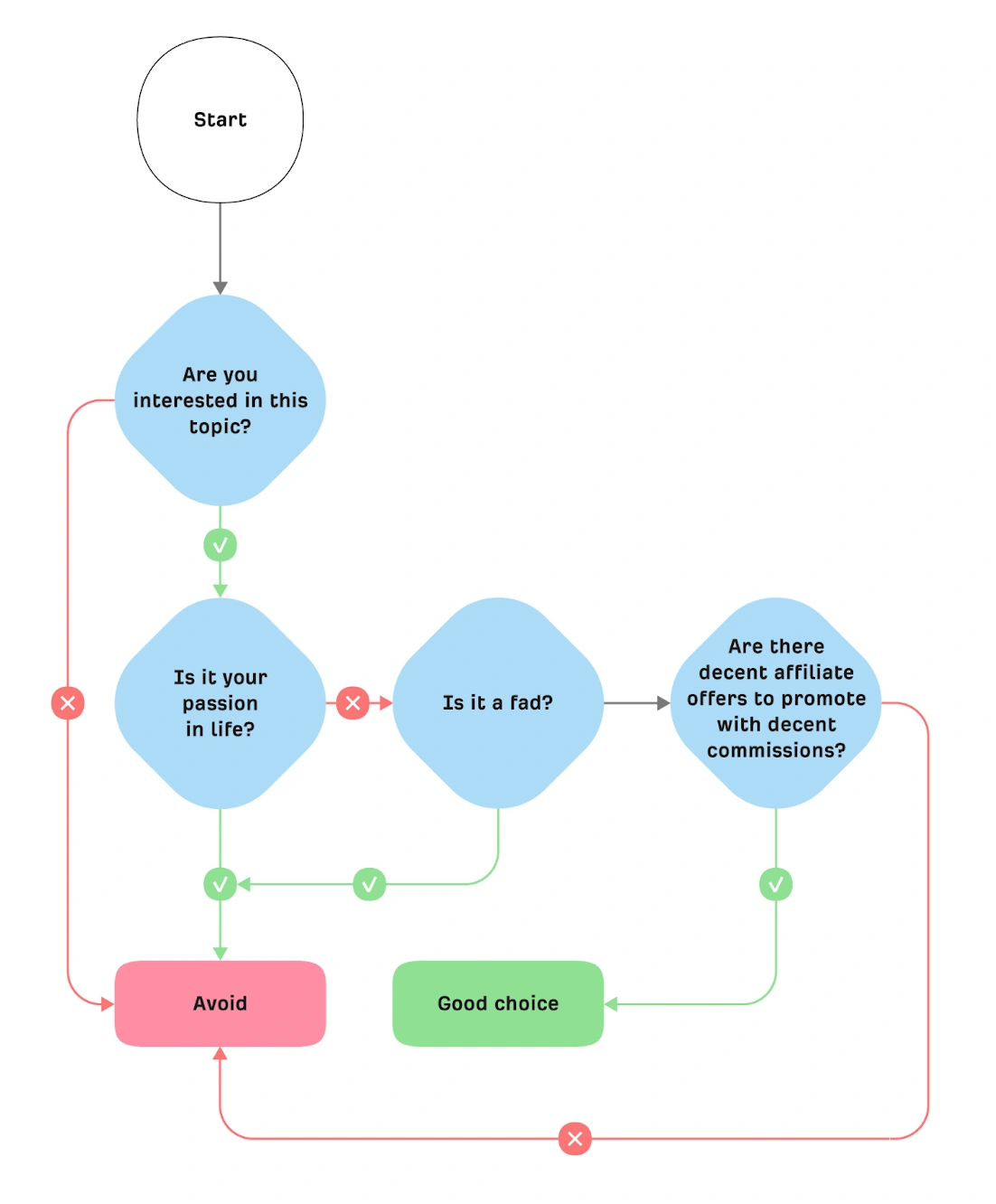
Beginner-Friendly Niches
Some niches are easier for beginners because they have steady demand and many affiliate programs. A few good options are:
- Health & Wellness – Supplements, weight loss, fitness gear
- Personal Finance – Budgeting, investing, side hustles
- Tech & Gadgets – Software, apps, reviews
- Home & Lifestyle – DIY, home decor, kitchen tools
- Online Learning – Courses, ebooks, skill-building resources
I made the mistake of picking a niche just because I liked it, without checking if it had strong affiliate programs or real demand. I spent months creating content, only to realize there weren’t many good products to promote or enough buyers interested. That set me back.
The best approach is to balance passion with profit. A niche should be something you’re comfortable talking about, but it also needs products people actively search for and buy. Before committing, research search trends, competition, and available affiliate programs. This saves time and helps you focus on a niche with real income potential.
Struggling to find a niche that actually makes money? Niche Navigator helps you uncover a profitable niche in just one hour—no passion or expertise needed. Learn how to turn inexperience into an advantage and use a proven formula to maximize profit potential. Stop guessing and start earning with the right niche today!
Step 3: Find the Right Affiliate Program
The right affiliate program determines how much you earn. A bad one can waste your time with low commissions or poor tracking, while a good one helps you get paid fairly for your efforts. I learned this hard way when I joined a program with a short cookie duration—by the time my audience was ready to buy, my commission window had closed.
Where to Find Affiliate Programs
Affiliate programs are everywhere, but not all are reliable. The best way to start is by joining established affiliate networks that connect you with brands offering commissions. Here are some of the most popular ones:
- Amazon Associates – A beginner-friendly option with thousands of products to promote. The downside? Low commission rates (as low as 1% on some items).
- ClickBank – Focuses on digital products like online courses and software. It offers high commissions, sometimes 50% or more, but you need to choose products carefully since quality varies.
- ShareASale – A solid platform with a mix of physical and digital products from well-known brands. It’s easy to use and has fair commission rates.
- CJ Affiliate (Commission Junction) – Works with big companies like Lowe’s and Verizon. If you’re targeting a serious audience, this platform has strong earning potential.
These networks let you browse thousands of programs, compare commission rates, and track earnings in one place.
What to Look for in an Affiliate Program
Not all programs are worth your time. Before signing up, check:
- Commission rates – Higher rates mean better earnings. Physical products often pay less (5–10%), while digital products and software subscriptions can go up to 50%.
- Product quality – Only promote products you trust. If people buy something you recommend and it’s terrible, they won’t trust you again. Read reviews or try it yourself before recommending it. Here is How to Choose the Right Products to Promote as an Affiliate
- Cookie duration – This determines how long you earn commissions after someone clicks your link. Some last just 24 hours (like Amazon), while others track sales for 30, 60, or even 90 days. Longer cookies give you a better chance of earning.
- Payout terms – Some programs pay weekly, others monthly. Some have a minimum payout threshold before you can withdraw earnings. Make sure you understand how and when you’ll get paid.
How to Sign Up
Joining an affiliate program is usually simple:
- Choose a program that fits your niche and audience. Here are The Main Key Features of a Good Affiliate Program
- Apply with accurate details. Some require website traffic or social media followers, while others accept beginners.
- Get your unique affiliate link after approval. This is how sales get tracked back to you.
- Start promoting the product using content, email marketing, or social media.
Some programs approve instantly, while others take days or weeks to review applications. If you get rejected, don’t take it personally—focus on building a stronger online presence and try again later.
Step 4: Set Up a Platform to Promote Affiliate Links
Affiliate links don’t make money on their own—you need a place to share them. The best platform depends on your strengths, but the goal is the same: attract an audience, provide value, and naturally introduce affiliate products.
I’ll explain…
Option 1: Start a Blog or Website (Best for Long-Term Success)
A blog is one of the best ways to grow affiliate income because it gives you full control, ranks on Google, and builds trust over time. Unlike social media, where posts disappear fast, a well-optimized blog post can bring in visitors for years, generating passive income.
Search engines send free traffic to blogs, helping you attract the right audience without relying on ads. Plus, a blog positions you as an expert, making people more likely to trust your recommendations and click your affiliate links. With consistent effort, your blog can become a reliable, long-term income source.
How It Works:
- You create a simple website and publish helpful content around your niche.
- Visitors find your articles through search engines or social media.
- You include affiliate links naturally within your content (reviews, tutorials, comparisons, etc.).
- Readers click, buy, and you earn commissions.
Why It Works:
A blog keeps working even when you’re not. A well-written post can generate commissions for months or even years. But blogging takes patience—it’s not a quick-money method.
Here is How to Get Started:
- Use WordPress or a simple website builder.
- Choose a niche with demand (Step 2).
- Write valuable content that answers real questions.
- Promote your posts through SEO, Pinterest, and social media.
I started with a basic blog, and it was slow at first. However, once my content was ranked on Google, commissions started rolling in without extra effort. If you want long-term success, a blog is a smart investment.
Option 2: Use Social Media (YouTube, Instagram, TikTok, Facebook Groups)
If writing isn’t your thing, social media is a great alternative. You don’t need a website—just a phone and a plan.
Best Platforms for Affiliate Marketing:
- YouTube: Create videos around your niche (reviews, tutorials, product comparisons). Include affiliate links in descriptions.
- Instagram & TikTok: Post short, engaging videos showing how a product works or why it’s worth buying. Use Linktree or bio links to drive traffic.
- Facebook Groups: Build a niche community where you provide value and recommend products naturally.
Why It Works:
Social media moves fast, meaning you can see results quicker than blogging. Viral posts can drive hundreds of clicks overnight.
Here is How to Get Started:
- Pick one platform and post consistently.
- Focus on solving problems or answering common questions.
- Use storytelling to make your content relatable.
- Add affiliate links in bios, descriptions, or pinned comments.
A friend of mine started on TikTok with 0 followers. After a few months of posting daily product reviews, he was earning from multiple affiliate programs. Social media works if you stay consistent.
Option 3: Build an Email List for Direct Marketing
Email marketing gives you a direct line to your audience. Unlike social media, you’re not fighting an algorithm—your emails land straight in inboxes.
How It Works:
- You create a freebie (ebook, checklist, mini-course) that people want.
- Visitors sign up with their email to get it.
- You send helpful emails with valuable content and affiliate links.
Why It Works:
People on your email list already trust you, making them more likely to buy. Plus, you’re not relying on Google or social media for traffic.
Here is How to Get Started:
- Use an email tool like GetResponse (my favorite) or ConvertKit.
- Offer something valuable like freebies to get sign-ups.
- Send useful content mixed with affiliate offers.
I ignored email marketing at first and regretted it. Once I started building a list, I saw more consistent sales—people who joined months ago were still buying from my emails.
How to Choose the Best Platform
Pick the platform that fits your skills:
- Love writing? Start a blog.
- Enjoy making videos? Try YouTube or TikTok.
- Want direct control? Build an email list.
If you can, combine multiple platforms. A blog with an email list works well. Social media can drive traffic to your blog or email sign-ups.
The key is to start. Your platform won’t be perfect on day one, but consistency beats perfection every time.
Step 5: Create Valuable Content That Attracts Clicks
Affiliate marketing only works if people trust you enough to click your links. The best way to earn that trust is by creating content that solves real problems.
People search for answers daily, and your content should provide solutions while naturally recommending affiliate products.
Product Reviews
Honest reviews help people decide before buying. Instead of listing features, focus on real benefits. What makes the product useful? How does it compare to others? Share personal experiences if possible. People trust firsthand insights more than generic descriptions.
Comparison Articles
Many shoppers hesitate between two or more products. A side-by-side comparison helps them decide. Highlight key differences, pros, and cons. Make recommendations based on different needs. Someone looking for affordability may prefer one option, while another might value durability.
How-To Guides
People love step-by-step tutorials, especially for topics like fitness, tech, or home improvement. Show them how to solve a problem using your affiliate product. A guide on “How to Start a YouTube Channel” could include recommendations for cameras, microphones, and editing software.
Listicles (Top 5, Best X for Y, etc.)
Lists perform well because they’re easy to scan and offer quick recommendations. Titles like “Top 5 Budget Laptops for Students” or “Best Supplements for Muscle Growth” attract clicks. Each item can be an affiliate product with a brief explanation of why it’s worth considering.
Creating valuable content isn’t about selling—it’s about helping. If your content answers real questions and makes purchasing easier, people will trust your recommendations and click your links.
How to Naturally Insert Affiliate Links Without Being Pushy
People don’t like being sold to, but they love getting helpful recommendations. That’s why you must place affiliate links where they feel natural—not forced. The key is to integrate them into your content like a friendly suggestion rather than an aggressive sales pitch.
One simple way is to link to products while explaining their benefits. If you’re writing a review, mention why you like the product, then add a link naturally: “This microphone delivers crisp audio and cancels background noise—perfect for podcasting. You can check the price here.” This keeps the focus on the value, not the sale.
Comparison articles are another great way to include links without sounding pushy. Instead of saying “Buy this!”, you lay out the facts: “Both these laptops are great for video editing, but this one has a stronger processor and better battery life. See full specs here.” Readers appreciate the insights and are more likely to click.
A call-to-action (CTA) can also work if it feels helpful, not salesy. Instead of “Buy now!”, try “See the latest deals here” or “Check customer reviews here.” These sound natural and encourage clicks without pressure.
The goal is to make affiliate links feel like a helpful resource, not a sales trap. Keep your focus on solving problems, and the clicks will come naturally.
Must Read: Why Valuable Content Wins in Affiliate Marketing (And How to Create It)
Step 6: Drive Traffic to Your Affiliate Links
Affiliate links won’t earn you money if no one sees them. Getting traffic is the hardest part, but once you have a steady flow of visitors, your earnings become more predictable. The best part is that you don’t need to spend money on ads—free traffic sources can work just as well.
1. SEO: Get Found on Google
If you have a blog, search engine optimization (SEO) is a must. It helps your content show up on Google when people search for answers. The trick is to target long-tail keywords with low competition that people actually type into Google. For example, instead of trying to rank for “best laptops”, aim for something more specific like “best laptops for video editing under $1,000.”
Here are the benefits of long-tail keywords:
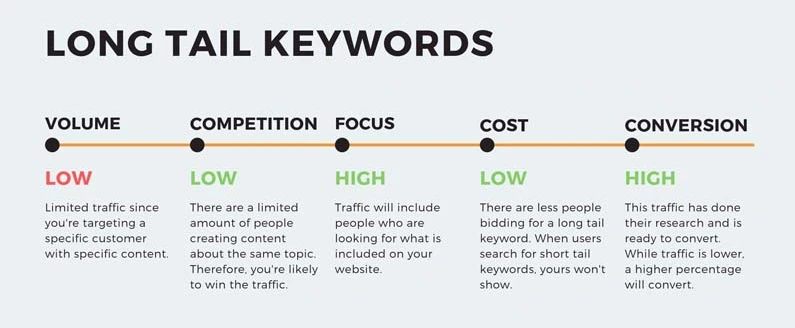
At the beginning, I wrote about topics that were too competitive. No one found my content. Once I started focusing on keywords with fewer competing pages, my traffic shot up.
My favorite tool for finding low-competitive keywords is KWFinder, I recommend it. SEO takes time, but it’s one of the most reliable ways to get consistent clicks.
2. YouTube: Rank Without a Website
YouTube is a goldmine for free traffic. Videos show up in Google searches, and many people prefer watching over reading. Plus, YouTube videos stick around for years, bringing in views long after you post them.
The best strategy is to create helpful videos and mention your affiliate link in the description. For example, a “Best Budget Microphones for YouTube” video can show different options, and each microphone can have a link below. Viewers trust content that feels real, so avoid overly scripted pitches. Just share your honest thoughts, and people will click.
3. Social Media: Tap Into Viral Traffic
Social media platforms like Pinterest, Instagram, and Facebook can drive massive traffic if used correctly. The key is to post content that gets shared—like quick tips, engaging images, or short videos.
Pinterest works especially well for niche topics. A well-designed pin about “10 Must-Have Kitchen Gadgets” can go viral and bring thousands of clicks. Instagram and Facebook work best if you build a community. Joining niche-related Facebook groups and providing value before dropping links can lead to long-term success.
4. Answering Questions: Be Helpful, Get Clicks
Platforms like Quora and Reddit are filled with people looking for answers. If you consistently provide helpful responses, you can drive a steady stream of traffic. The trick is to genuinely answer questions while naturally suggesting useful resources (your affiliate links).
For example, if someone on Quora asks, “What’s the best beginner-friendly web hosting?”, you can share your experience, explain why a certain host is good, and mention that they can check it out here (insert affiliate link). Just avoid spammy behavior—if your answers are helpful, people will trust your recommendations.
5. Paid Traffic Methods (Optional)
If you want faster results, paid ads can bring traffic instantly. But they can also drain your budget if done wrong. Unlike free methods, paid traffic works best when you already know what converts.
Facebook & Google Ads: Instant Traffic, Higher Risk
Facebook and Google Ads let you target people based on interests, search intent, or behaviors. With Facebook, you can show ads to people interested in your niche, while Google Ads display your content when people search for related terms.

I’ve tested both. Google Ads work well for products people actively search for, like “best noise-canceling headphones.” Facebook Ads, on the other hand, are better for impulse buys or niche interests. But if you send people straight to an affiliate link, most won’t buy. A better approach is to send them to a blog post or a landing page where they can warm up to the product first.
Retargeting Ads: Bring Back Lost Visitors
Most people won’t buy the first time they see an offer. Retargeting lets you show ads to those who visited your site but didn’t purchase. These ads follow them around on Facebook, Instagram, and even other websites, reminding them of what they saw.
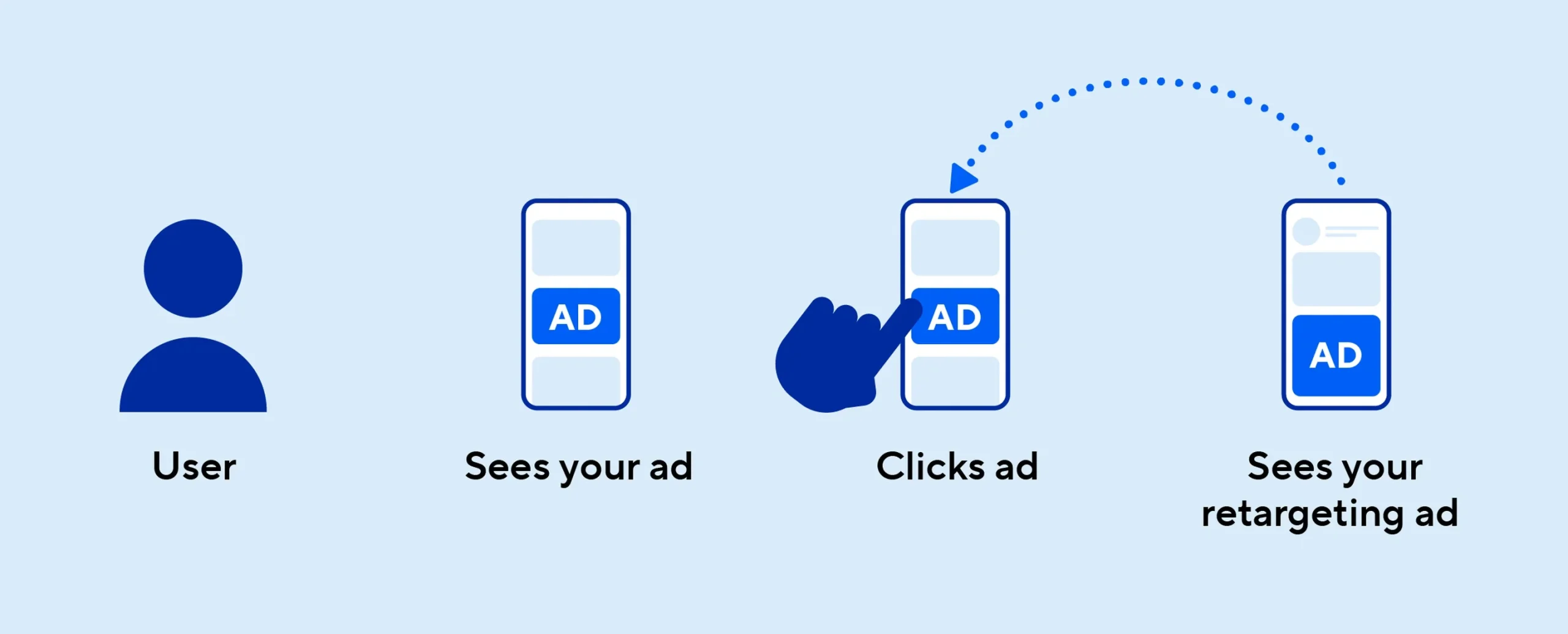
I’ve used retargeting to bring back visitors who read my review articles but didn’t click my affiliate links. A simple ad like “Still looking for the best budget laptop? Here are my top picks!” can bring them back and increase conversions. Since retargeting only targets warm leads, it’s cheaper and more effective than running cold ads.
Lastly, traffic is the lifeblood of affiliate marketing. You don’t need all these methods—just pick one and be consistent. SEO takes time but lasts long. YouTube can build trust fast. Social media can bring quick spikes of traffic. Answering questions builds credibility. Choose what fits your strengths, and the clicks (and commissions) will follow.
Step 7: Earn Your First Commission!
Earning your first affiliate commission is a milestone. It’s proof that your effort is paying off and that making money online is real. But what actually happens after someone clicks your link? How do you track earnings? And what does it feel like to get that first payout? Let’s break it down.
What Happens After Someone Clicks Your Affiliate Link?
Once someone clicks your affiliate link, the system tracks them using cookies. If they buy within the cookie period, you get paid. Some programs, like Amazon Associates, have short cookie durations (24 hours), while others, like Bluehost, last 30-90 days. If the person returns later and completes the purchase, you still earn a commission.
I remember checking my affiliate dashboard and seeing my first sale. It was a small amount, but knowing someone clicked my link and actually bought something? That was proof this worked.
How to Track Your Affiliate Earnings
Most affiliate programs have a dashboard showing clicks, conversions, and commissions. Some update in real time, while others take a few hours or days. I check my stats daily—not obsessively, but just enough to see what’s working.
I also recommend using tracking tools. Some networks, like ShareASale and CJ Affiliate, let you track which links bring the most sales. If you use multiple traffic sources (blog, YouTube, social media), tracking helps you double down on what works.
The Feeling of Getting Your First Payout
Nothing beats the first payout. Whether it’s $5 or $500, it proves this isn’t just theory. For me, that first commission flipped a switch—I knew I could scale this.
Most programs have a minimum payout, usually $50-$100. Once you hit it, they send your earnings via PayPal, direct deposit, or check. The first time I saw money land in my PayPal account from affiliate marketing, I was hooked. It wasn’t just about the money—it was knowing I’d built something that could grow.
Your first commission is just the start. Keep going, keep testing, and soon those small wins will turn into consistent income.
Step 8: Scale Up and Earn More
Making your first commission is just the beginning. Now, it’s time to grow your earnings by doubling down on what worked and testing new strategies.
Rinse and Repeat What Worked
Look at the content and traffic sources that brought in your first sale. Was it a blog post? A YouTube video? A social media post? Do more of what worked. If one article made money, write similar ones targeting related keywords. If a video brought in clicks, create follow-ups or break it into smaller clips for other platforms.
Experiment with New Content and Affiliate Programs
Affiliate marketing isn’t one-size-fits-all. Different content formats attract different audiences. If you’ve only written product reviews, try a comparison post or a tutorial. Test new affiliate programs too. Some offer higher commissions, better products, or longer cookie durations, which can increase your earnings.
Use Email Marketing for Passive Income
Relying only on search or social media traffic can limit your growth. An email list gives you direct access to your audience. Once people subscribe, you can send valuable content, recommend affiliate products, and build trust over time. This turns one-time visitors into repeat buyers, helping you earn more without constantly chasing new traffic. Here’s how to build ana email list.
Scaling up takes time, but the key is consistency. Keep refining your process, and your income will grow naturally.
Conclusion
Earning your first dollar in affiliate marketing is more than just a small win—it’s proof that your efforts are paying off. The key is consistency. You’ve set up your platform, chosen the right products, and created valuable content. Now, it’s about refining your approach, optimizing for conversions, and scaling up.
Success doesn’t come overnight, but every click, every sale, and every lesson learned moves you closer to sustainable income. Keep testing different strategies, tracking results, and improving your process. The first commission is just the beginning—what you do next determines how far you go.
Frequently Asked Questions
How long does it take to make your first affiliate sale?
It depends on your strategy. Some see results within weeks, while others take months. The key is to drive targeted traffic. If you’re consistent with content and promotion, your first commission will come sooner.
Do I need a website to make money with affiliate marketing?
No, but it helps. A blog builds long-term credibility and passive traffic. If you prefer quicker results, social media and YouTube are solid options. Email marketing also works well for direct promotions.
How do I choose the best affiliate program?
Look for high commissions, quality products, and long cookie durations. Programs like Amazon Associates, ShareASale, and CJ Affiliate offer solid options. Pick something relevant to your niche and audience.
What’s the best way to promote affiliate links?
Focus on solving problems. Product reviews, comparisons, and “how-to” guides work well. SEO, YouTube, and social media drive traffic. Avoid spamming—build trust first, then recommend products naturally.
Can I do affiliate marketing without spending money?
Yes. Free traffic methods like SEO, YouTube, and social media work well. However, paid ads can speed up results if used wisely. Start with free methods, then reinvest profits into scaling.
What should I do after earning my first commission?
Analyze what worked and do more of it. Create similar content, refine your approach, and expand into new traffic sources. Reinvest earnings into tools, ads, or better content. The goal is to scale steadily.

